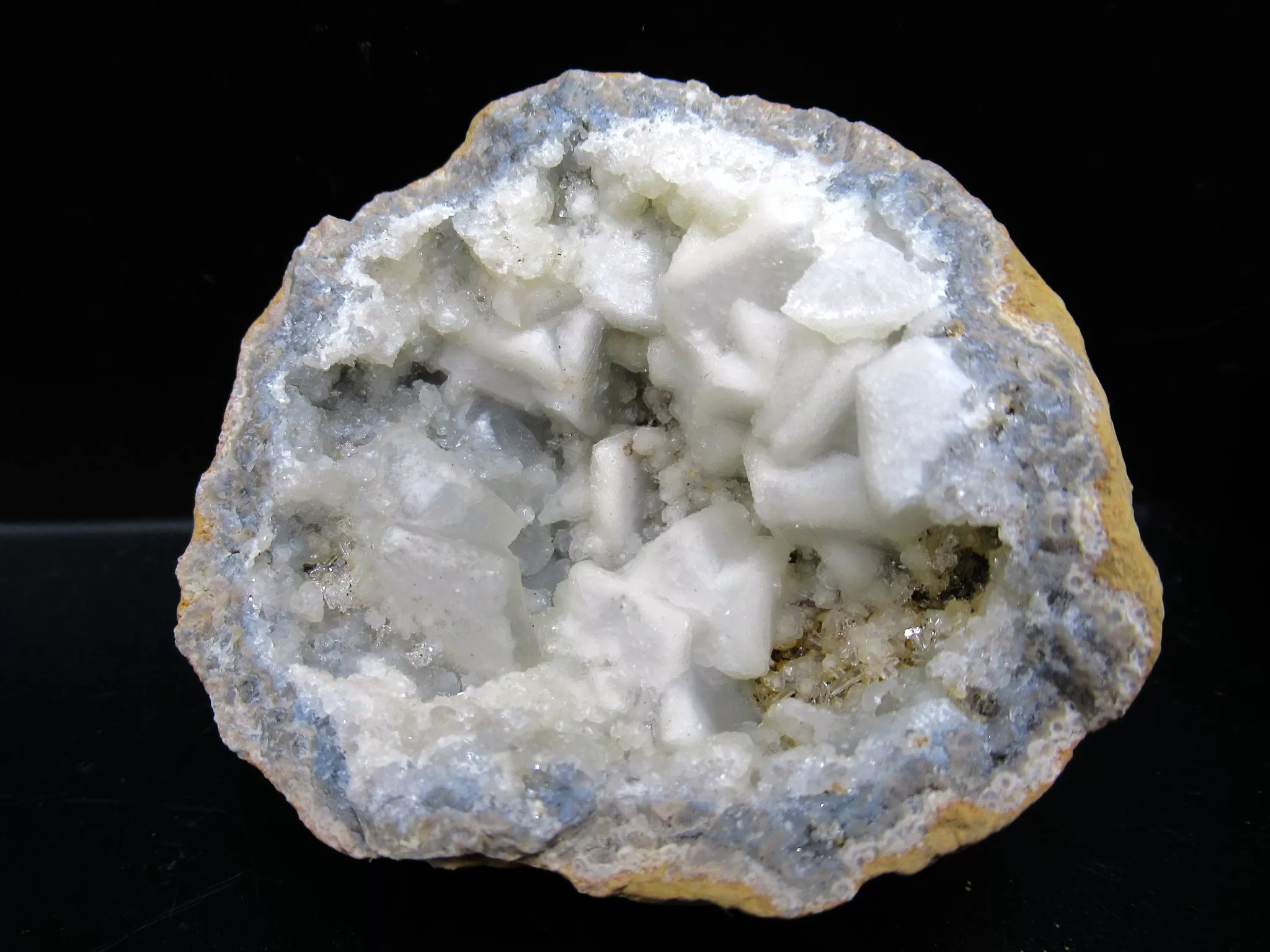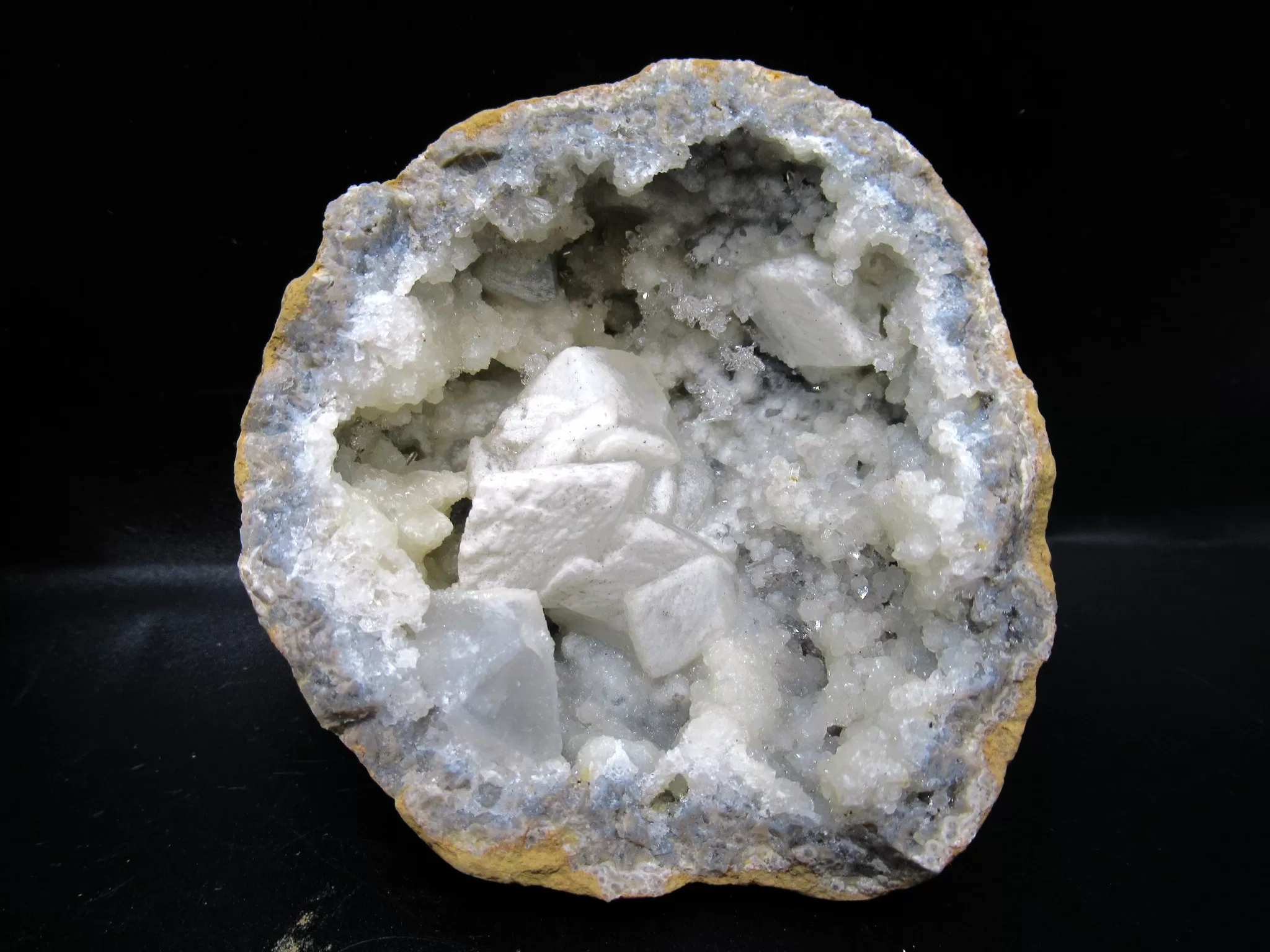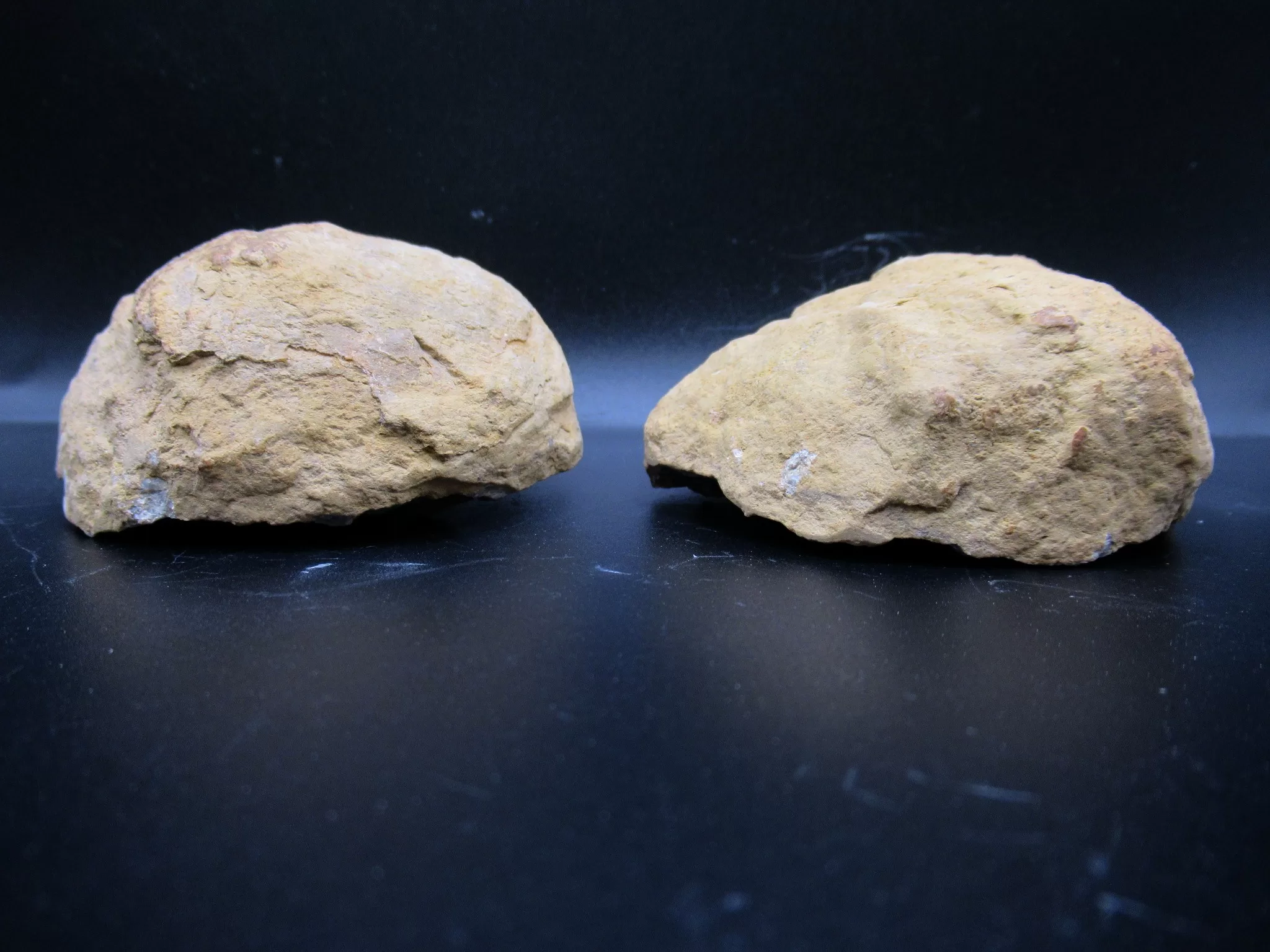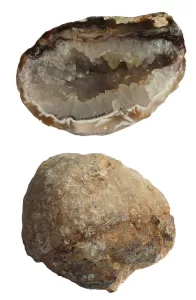Description
Keokuk Iowa Geode
- Geode (Broke in half)
- Mississippian Period (300 Million Years Old)
- Found in the Warsaw Formation
- Keokuk, Iowa
- Specimen measures 2.61″ wide across the opening
- MORE Geodes for Sale
Geodes from the Keokuk area contain a variety of minerals, but quartz is dominant in most. Beautiful transparent to white quartz crystals cover the interior walls of many geodes. Chalcedony forms the outer shell in all Keokuk geodes. White, gray, blue, yellow or orange chalcedony also encrust the interior walls of many geodes.
Keokuk geodes are dug out of the lower Warsaw Formation, mostly out of mudstone or dolomite. Geodes found in the mudstone are usually smaller compared to the ones found in dolomite.
Then water entered the equation. Silica-rich water penetrated the cavities and ran through them, leaving behind the start of crystalline growth. The tiny crystals clung to the inner walls of the bubble. Thousands of years passed, then millions. Slowly, layers formed inside. First came agate, and then layers of quartz. Rock crystal grew larger with jagged points. .








